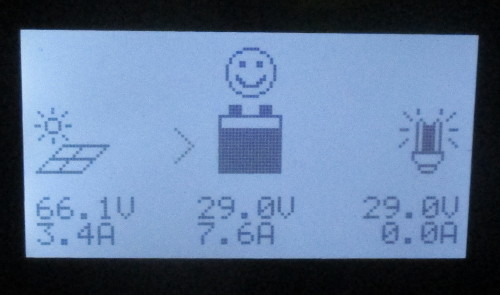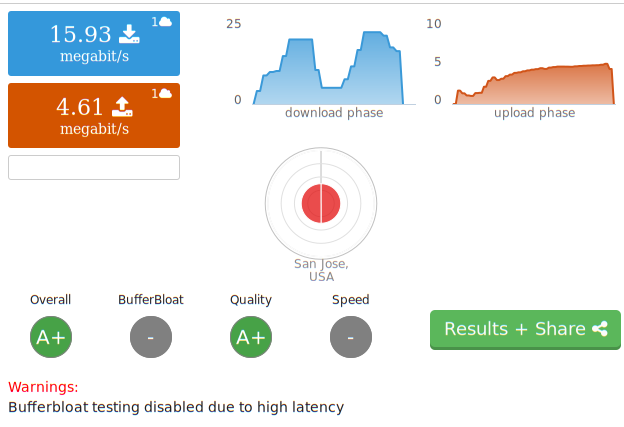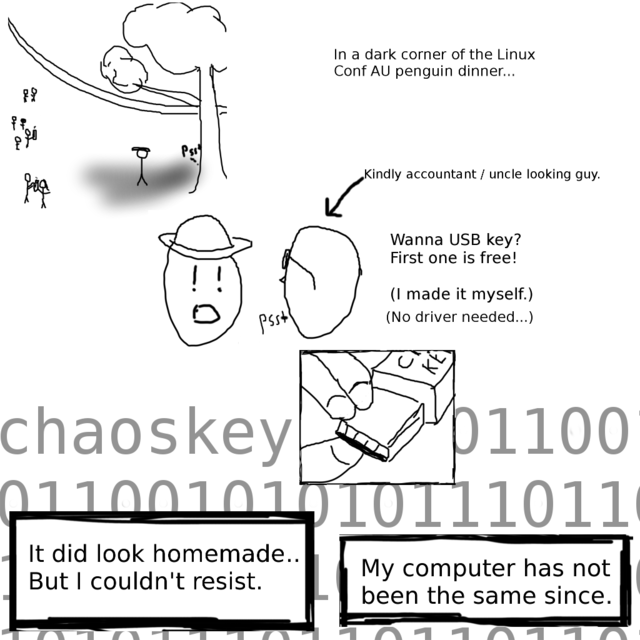
In one of the good parts of the very mixed bag that is "
Lo and Behold:
Reveries of the Connected World",
Werner Herzog asks his interviewees what the Internet might dream of, if it
could dream.
The best answer he gets is along the lines of: The Internet of before
dreamed a dream of the World Wide Web. It dreamed some nodes were
servers, and some were clients. And that dream became current reality,
because that's the essence of the Internet.
Three years ago, it seemed like perhaps another dream was developing
post-Snowden, of dissolving the distinction between clients and servers,
connecting peer-to-peer using addresses that are also cryptographic public
keys, so authentication and encryption and authorization are built in.
Telehash is one hopeful attempt at this, others include snow, cjdns, i2p,
etc. So far, none of them seem to have developed into a widely
used network, although any of them still might get there. There are a lot
of technical challenges due to the current Internet dream/nightmare, where
the peers on the edges have multiple barriers to connecting to other
peers.
But, one project has developed something similar to the new dream,
almost as a side effect of its main goals:
Tor's onion services.
I'd wanted to use such a thing in
git-annex,
for peer-to-peer sharing and syncing of git-annex repositories. On November
13th, I started building it, using Tor, and I'm releasing it concurrently with
this blog post.
git-annex's Tor support replaces its old hack of tunneling git
protocol over XMPP. That hack was unreliable (it needed a TCP on top of XMPP
layer) but worse, the XMPP server could see all the data being transferred.
And, there are fewer large XMPP servers these days, so fewer users could
use it at all. If you were using XMPP with git-annex, you'll need to switch
to either Tor or a server accessed via ssh.
Now git-annex can serve a repository as a Tor onion service, and that can
then be accessed as a git remote, using an url like
tor-annex::tungqmfb62z3qirc.onion:42913. All the regular git, and
git-annex commands, can be used with such a remote.
Tor has a lot of goals for protecting anonymity and privacy. But the
important things for this project are just that it has end-to-end
encryption, with addresses that are public keys, and allows P2P
connections. Building an anonymous file exchange on top of Tor is not my
goal -- if you want that, you probably don't want to be exchanging git
histories that record every edit to the file and expose your real name by
default.
Building this was not without its difficulties.
Tor onion services were originally intended to run hidden websites,
not to connect peers to peers, and this kind of shows..
Tor does not cater to end users setting up lots of Onion services.
Either root has to edit the
torrc file, or the Tor control port can be
used to ask it to set one up. But, the control port is not enabled by
default, so you still need to su to root to enable it. Also, it's difficult
to find a place to put the hidden service's unix socket file that's
writable by a non-root user. So I had to code around this, with a
git
annex enable-tor that su's to root and sets it all up for you.
One interesting detail about the implementation of the P2P protocol in
git-annex is that it uses two Free monads to build up actions. There's a Net
monad which can be used to send and receive protocol messages, and a Local
monad which allows only the necessary modifications to files on disk.
Interpreters for Free monad actions can chose exactly which actions to
allow for security reasons.
For example, before a peer has authenticated,
the P2P protocol is being run by an interpreter that refuses to run any
Local actions whatsoever. Other interpreters for the Net monad could be
used to support other network transports than Tor.
When two peers are connected over Tor, one knows it's talking to the
owner of a particular onion address, but the other peer knows nothing about
who's talking to it, by design. This makes authentication harder than it
would be in a P2P system with a design like Telehash.
So git-annex does its own authentication on top of Tor.
With authentication, users would need to exchange absurdly long
addresses (over 150 characters) to connect their repositories. One very
convenient thing about using XMPP was that a user would have connections to
their friend's accounts, so it was easy to share with them. Exchanging long
addresses is too hard.
This is where
Magic Wormhole
saved the day. It's a very elegant way to get any two peers in touch
with each other, and the users only have to exchange a short code
phrase, like "2-mango-delight", which can only be used once. Magic Wormhole
makes some security tradeoffs for this simplicity. It's got vulnerabilities
to DOS attacks, and its MITM resistance could be improved. But I'm lucky
it came along just in time.
So, it takes only installing Tor and Magic Wormhole,
running two git-annex commands, and exchanging short code phrases with
a friend, perhaps over the phone or in an encrypted email, to get
your git-annex repositories connected and syncing over Tor.
See the documentation
for details. Also, the git-annex webapp allows
setting the same thing up point-and-click style.
The Tor project blog has throughout December been
featuring all kinds of
projects that are using Tor.
Consider this a late bonus addition to that. ;)
I hope that Tor onion services will continue to develop to make them easier
to use for peer-to-peer systems. We can still dream a better Internet.
This work was made possible by all my supporters on
Patreon.
 Success! I received the Tracer4215BN charge controller where UPS
accidentially-on-purpose delivered it to a neighbor, and got it connected
up, and the battery bank rewired to 24V in a couple hours.
Success! I received the Tracer4215BN charge controller where UPS
accidentially-on-purpose delivered it to a neighbor, and got it connected
up, and the battery bank rewired to 24V in a couple hours.
 Here it's charging the batteries at 220 watts, and that picture was taken
at 5 pm, when the light hits the panels at nearly a 90 degree angle.
Compare with the old panels, where the maximum I ever recorded at high noon
was 90 watts. I've made more power since 4:30 pm than I used to be able to
make in a day! \o/
Here it's charging the batteries at 220 watts, and that picture was taken
at 5 pm, when the light hits the panels at nearly a 90 degree angle.
Compare with the old panels, where the maximum I ever recorded at high noon
was 90 watts. I've made more power since 4:30 pm than I used to be able to
make in a day! \o/













